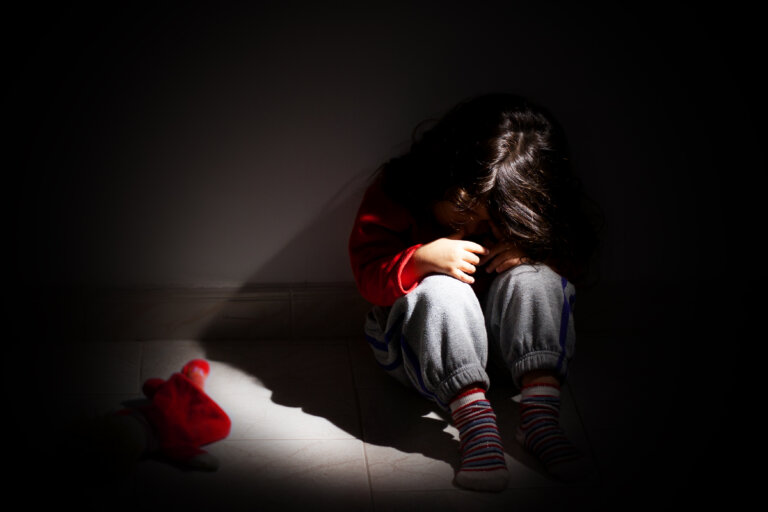In New York Family Court, the terms child abuse and child neglect often appear together — yet they describe very different legal standards. Both are governed by Article 10 of the Family Court Act (FCA), but the difference lies in the nature of harm to the child and the conduct of the parent or caregiver.
As an experienced New York child abuse attorney, I often explain that abuse involves intentional or reckless acts that cause or risk serious harm, while neglect focuses on a parent’s failure to provide a minimum degree of care. This article outlines the difference between the two concepts, drawing from key New York appellate cases and the statutory language that defines them.
Defining Abuse: Serious Harm or Risk of Harm
Under FCA § 1012(e), an “abused child” is one under 18 years of age whose parent or caretaker:
- Inflicts or allows to be inflicted physical injury by non-accidental means that causes or creates a substantial risk of death, serious disfigurement, or impairment of physical or emotional health;
- Creates or allows a substantial risk of such injury; or
- Commits or allows sexual offenses or exploitation as defined in the Penal Law.
In Matter of Isabella E., the Appellate Division held that a finding of abuse requires proof of conduct rising to the level of a criminal sexual or physical offense, such as sexual assault, exploitation, or severe beating . Abuse cases therefore require clear evidence of intentional or reckless acts that cause or risk grave harm.
Defining Neglect: Failure to Exercise Minimum Care
By contrast, under FCA § 1012(f), a “neglected child” is one whose physical, mental, or emotional condition has been impaired or is in imminent danger of becoming impaired due to a parent’s failure to exercise a minimum degree of care. Neglect can involve failing to provide:
- Adequate food, clothing, or shelter;
- Necessary medical or dental care;
- Education; or
- Proper supervision or guardianship.
Neglect focuses on omissions — what the parent did not do. In Matter of Tremont N.F., the Appellate Division ruled that proof of mental illness alone is not enough; there must be a causal link between the parent’s condition and harm or risk of harm to the child . Similarly, in Matter of David J., the court found neglect where a mother’s untreated anxiety and isolation placed her children at imminent risk of emotional harm .
The Threshold of Harm
Abuse and neglect differ in the severity of harm that must be shown.
- Abuse requires proof of serious physical or emotional injury, or a substantial risk of such injury — for example, sexual abuse or violent assaults.
- Neglect requires only proof that a child’s well-being has been impaired or is in imminent danger of being impaired due to a failure to exercise reasonable care.
In In re Janiyah T., the Family Court held that a single incident of excessive corporal punishment could support a finding of neglect even if the injury was minor, because the act showed a lack of minimal care . Abuse, by contrast, requires proof of severe or lasting harm.
Domestic Violence and Neglect
One of the most influential cases in this area is Nicholson v. Scoppetta, where the New York Court of Appeals ruled that a mother who is a victim of domestic violence cannot automatically be found neglectful simply because her child witnessed the violence .
The Court explained that to prove neglect, ACS must establish:
- That the child’s emotional or physical condition was impaired or in imminent danger of impairment; and
- That the impairment was caused by the parent’s failure to exercise a minimum degree of care.
This decision ensures that victims of domestic violence are not punished for being abused, unless there is evidence that their inaction directly placed the child at risk.
Mental Illness and Neglect
In recent cases, courts have emphasized that mental illness must cause or risk harm to support a neglect finding.
In Matter of Zaria P., the mother’s untreated mental health condition, combined with excessive corporal punishment, supported a neglect finding . However, in Tremont N.F., neglect was dismissed because ACS could not prove that the mother’s mental illness affected her ability to care for her child .
Thus, mental illness alone does not equal neglect — the law requires a causal connection to actual or potential harm.
Derivative Abuse and Neglect
Under FCA § 1046(a)(i), if one child has been abused or neglected, that evidence may be used to show neglect or abuse of another child in the same household.
In Matter of Malik M., the court held that a mother’s failure to protect one child from sexual abuse and domestic violence justified findings of derivative neglect for her other children, because it showed a pattern of impaired judgment .
The principle behind derivative findings is that a parent’s consistent failure to protect one child may endanger others, even if no harm has yet occurred.
Balancing Protection and Family Integrity
The New York Court of Appeals in Nicholson v. Scoppetta emphasized that the goal of Article 10 is to protect children from harm while avoiding unnecessary interference in family life. The court cautioned that Family Court must focus on “serious harm or potential harm,” not simply undesirable parental choices.
This balance ensures that findings of neglect or abuse are based on objective danger, not subjective judgments about parenting styles.
Key Differences at a Glance
| Category | Abuse | Neglect |
| Definition | Intentional or reckless acts causing serious harm | Failure to provide minimum care resulting in harm or imminent risk |
| Harm Level | Serious physical/emotional harm or substantial risk | Impairment or imminent danger of impairment |
| Conduct Type | Active misconduct (acts) | Omission or failure to act |
| Examples | Sexual abuse, violent assault, severe beating | Leaving a child unattended, failing to seek medical care, excessive discipline |
| Proof Required | Preponderance of evidence + serious injury | Preponderance of evidence + causal link to impairment |
| Court’s Focus | Intent and gravity of harm | Parental capacity and reasonable care |
Conclusion
Understanding the legal distinction between abuse and neglect is essential for anyone facing or defending against allegations in New York Family Court. Abuse involves deliberate harm, while neglect concerns a failure to meet minimal standards of care. Both require a careful, fact-specific analysis by the court.
For parents, caregivers, or attorneys, recognizing this difference can be critical in preparing a defense, protecting parental rights, and ensuring that families receive fair treatment under the law.
Authored by George M. Gilmer, Esq., an experienced New York child abuse and neglect attorney based in Brooklyn, NY. This article is for informational purposes only and does not constitute legal advice.

